I have a pair of pants that are almost 11 years old. They’re light olive, made from a very lightweight form of nylon and at this point acceptably shabby. I have kept them this long for two reasons: I spent a decent amount of money on them, and they’re so well made that I couldn’t kill them unless I actively tried. This is the reason why Outlier is the only company that I trust for men’s pants.
If you have never met me, you should know that I’m a large guy, hovering between 6’1” and 6’2” depending on how bad my posture is on any given day. Prior to getting into Outlier, my plan in my shithead 20s era was to buy whatever pair of Uniqlo jeans fit me, get them hemmed for free at the store and then drive them into the dirt until the crotch exploded from the force of my quadriceps.
A few things changed. The first is that I developed a fashion sense. It helped that there were a lot of very good sample sales in New York City, providing a steady drip of fashion pieces for my broke ass. The other was that I got tired of fast fashion failing me constantly. New York City is notoriously hard on clothes; it’s nasty here, and I wanted pants that would not get immediately ruined after a year of being subjected to the weather and grime.
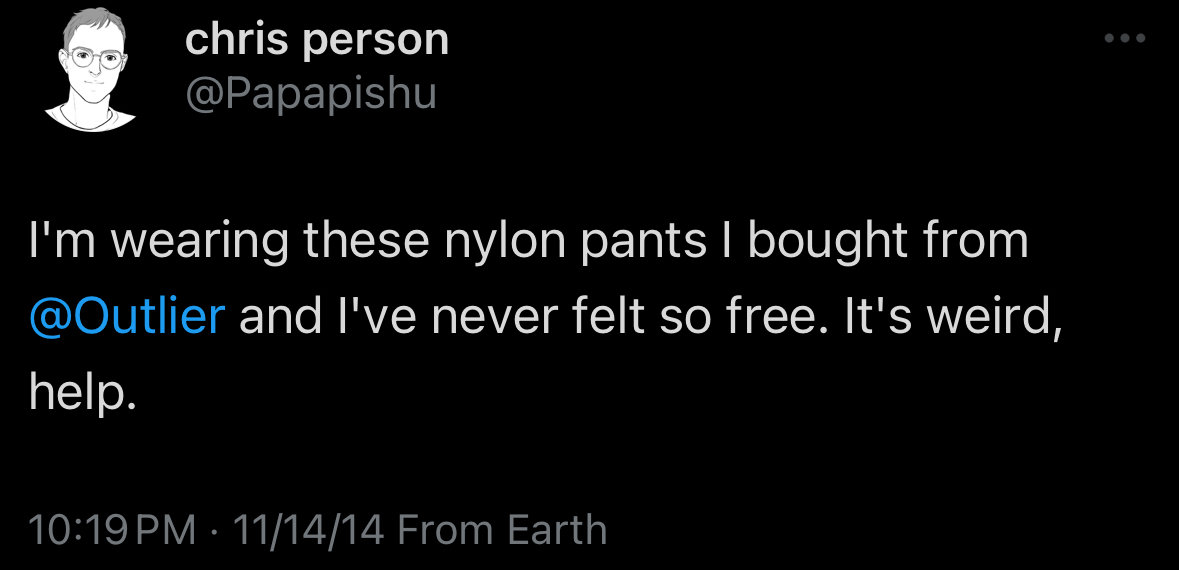
I cannot remember how Outlier came on my radar, but at the time they were a company with a goal of making clothes durable enough to withstand the abuse of a cycling commute, similar to Levi’s Commuter line, but that fashioned in a manner presentable enough for an office job. The cycling angle has faded over time (in part because it has become easier to cycle in the city), but the commitment to performance fabrics and construction has not. Outlier still prides themselves on using good materials to an obsessive degree, constantly trying to find some technical fabric from Japan or one that is borderline impossible to source on a consumer level. The majority of their clothing has traditionally lacked a logo, theirs being a simple silhouette of a black swan, although they’ve gotten slightly bolder on including (easy to remove) tags on newer items. Outlier’s basics are what William Gibson would describe as “CPUs” or Cayce Pollard Units in the book Pattern Recognition: reliable standards that lack any external branding worn by the logo-allergic protagonist Cayce Pollard.

Have you ever treated yourself to something nice and realized you’re never going to be able to buy the worse alternative ever again? That’s what happened when I bought my pair of lightweight Futureworks. Not only were they comfortable, water resistant and well made, they also fit my body perfectly. But probably the most important part was how they were stitched together. Many mens pants are sewn in such a way as to tear directly down the middle, while the Futureworks had a gusseted crotch - a piece of fabric sewn to the natural stress point of the crotch that removes that tension from the equation. That, combined with the fact that they were made out of fairly strong, slightly stretchy nylon, has made them a durable staple.
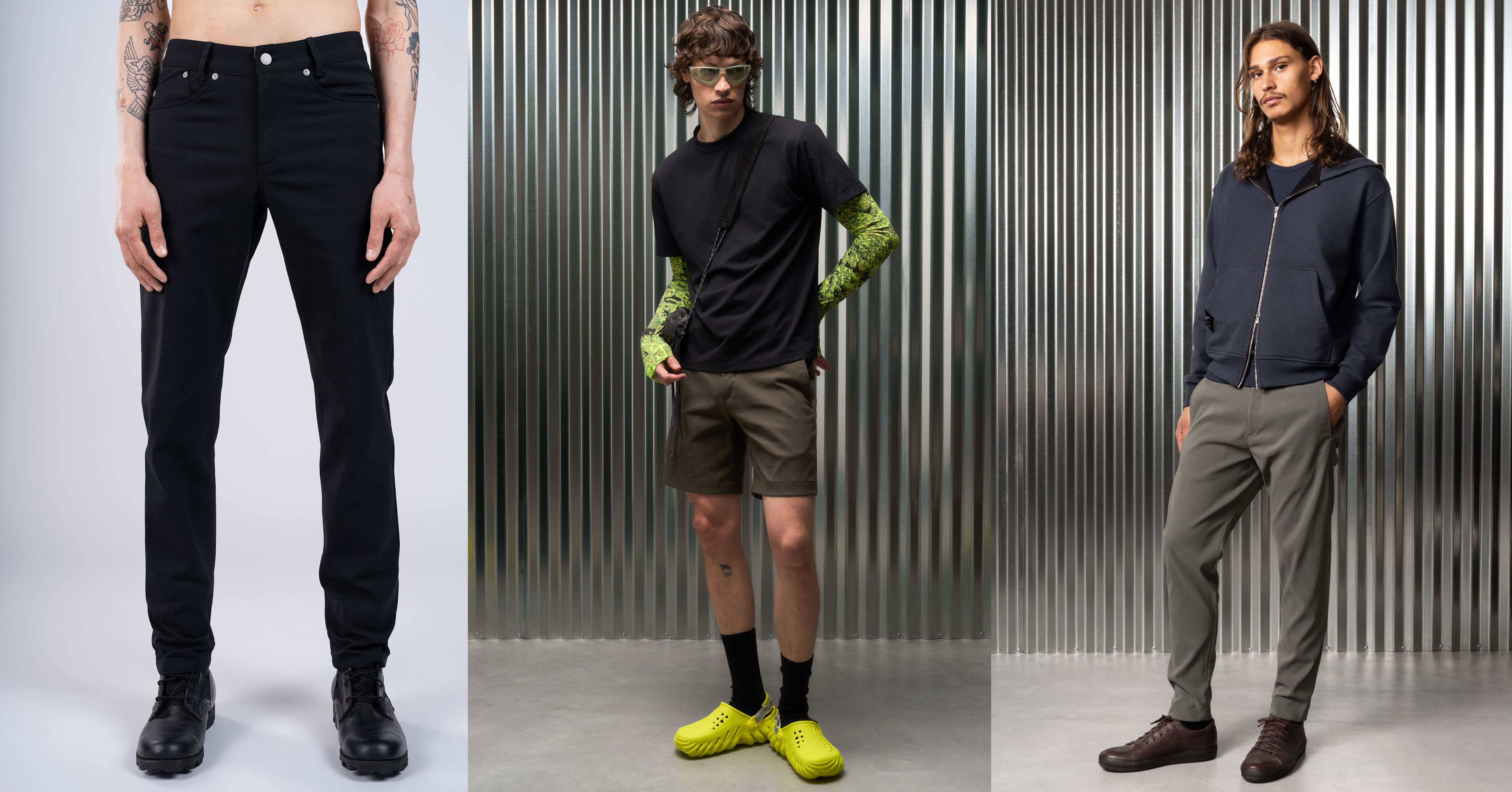
Eventually the Futureworks would be supplanted by the Futuredarts, which would further refine the pants by adding darting to them. Outlier does a fairly good job at keeping a comprehensive archive of their old lines of clothing online, so you can easily track the evolution of the brand as it changes over time. Other reliable standards are the Slim Dungarees, a slightly more durable pair of pants than the Futuredarts. Outlier probably has some of the most reliable mens shorts in the game in various cuts, which include an internal drawstring. My favorite pants of all are the Injected Linen Pants, an extremely breathable pair perfect for summer, stitched from a polyester/linen blend that is far more delicate than their standard fare but also leagues more practical than linen pants tend to be.
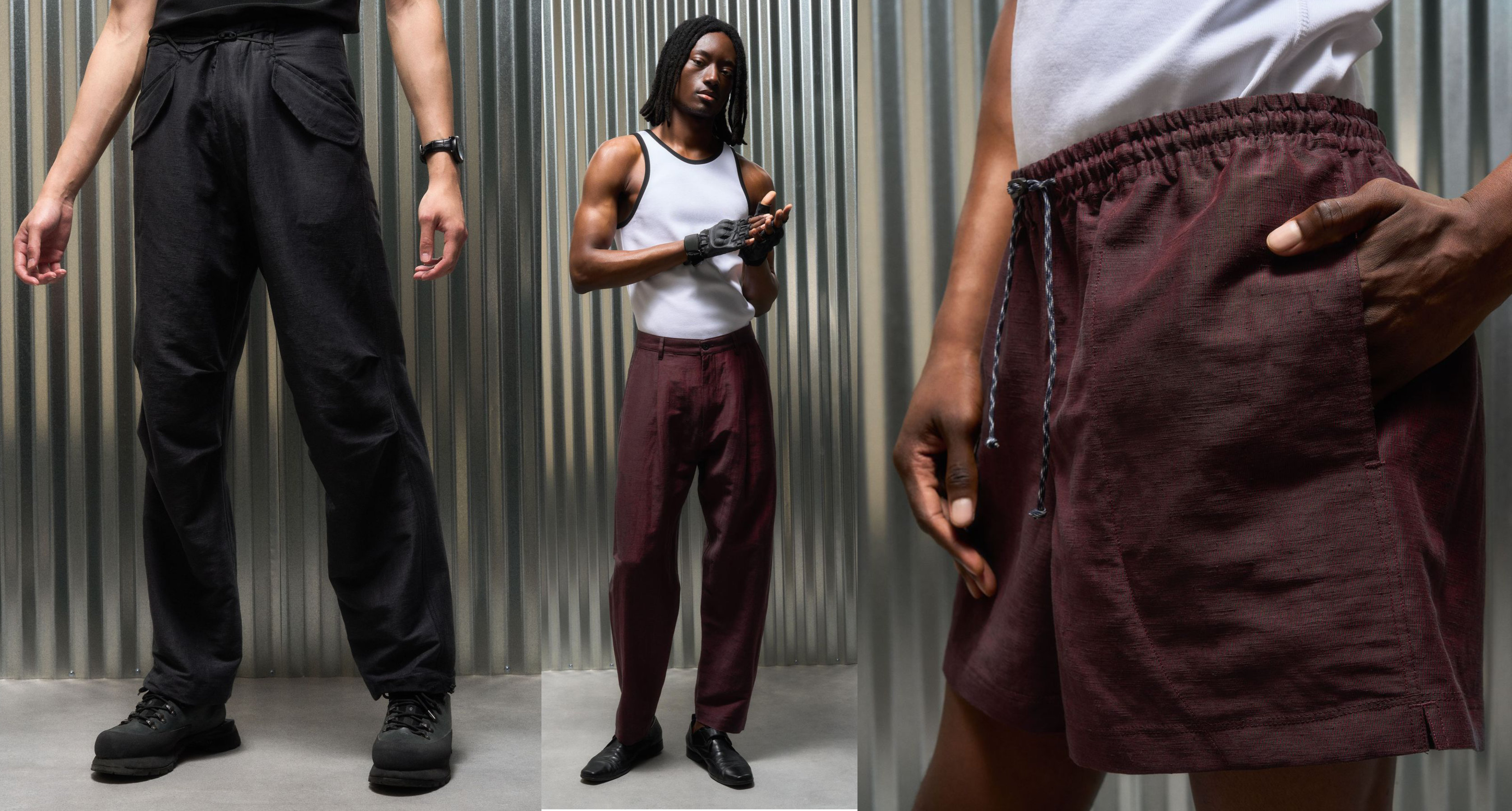
At the time of writing you’re looking at paying $125-$200 for a pair of shorts or pants, and be warned that if you decide to venture outside of the basics you will pay a hefty premium for it. That said, I have bought so many pairs of pants over the years, particularly from their seasonal grab bag sales dubbed “WTF” (you pay them 50 bucks, give them a waist size, and they send you something in that size), that I have a wardrobe in basically every waist size I have fit into.
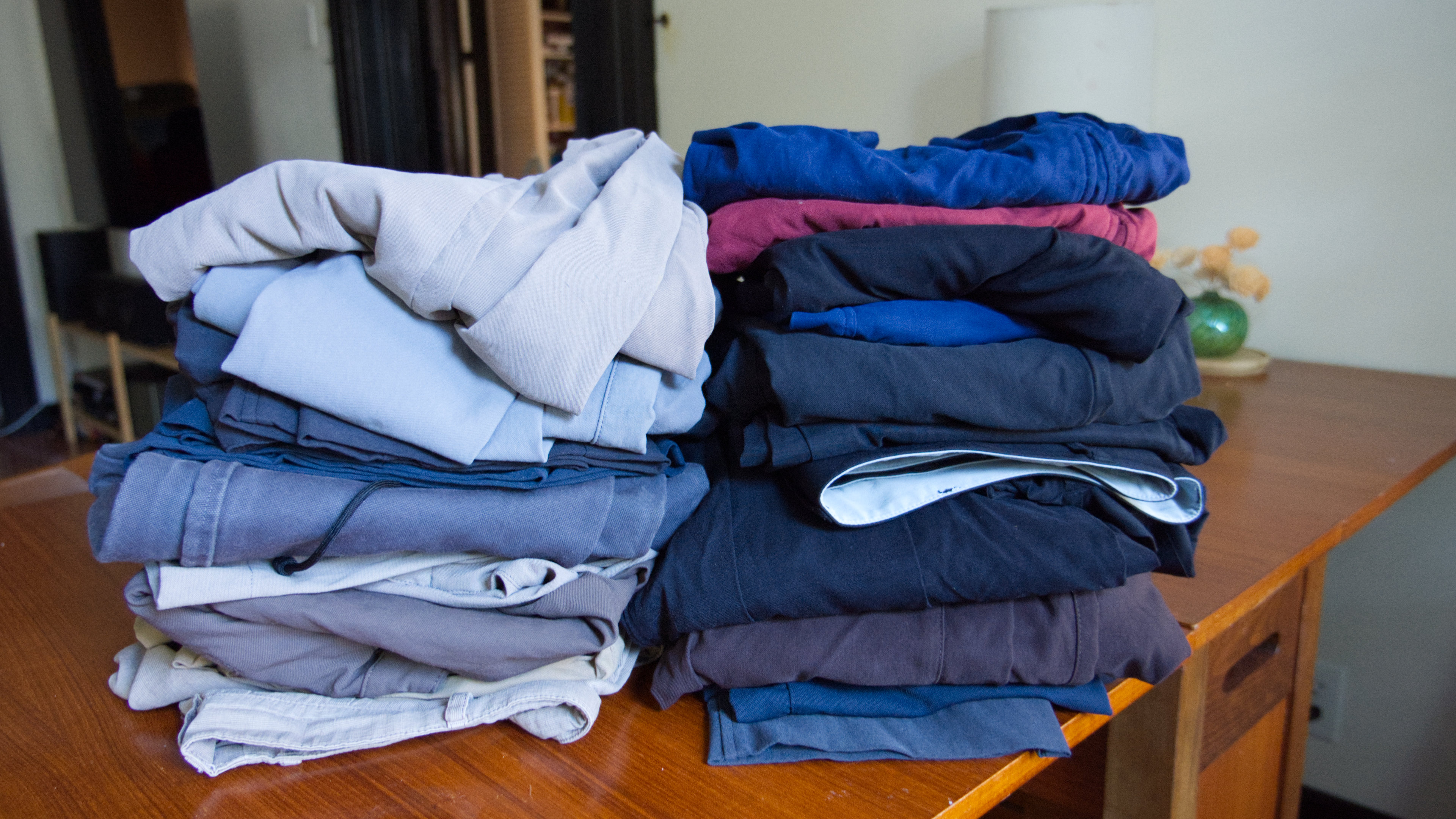
It is a strange thing to write about a company this way, but Outlier is, in a bit of nominative determinism, singular. They have held on to the 2010s direct to consumer model while many startups from that time have largely discarded this concept. Their subreddit benefitted from an influx of traffic that helped them build a following there and gave them a step up. This community would in turn help shape their tastes and give them feedback, and the board felt truly conversational for many years. Outlier embodied the zeitgeist of the Techwear community in its dedication to technical fabrics, although they have been generally much better at putting out pieces that don’t feel anchored to that movement and have in some ways outlived it. If you were to describe their current aesthetic, it would be a shockingly coherent venn diagram of rave wear, sensible office basics and LaKeith Stanfield’s wardrobe in the Netflix Death Note movie. That’s perfect because that’s how I dress most of the time anyway.
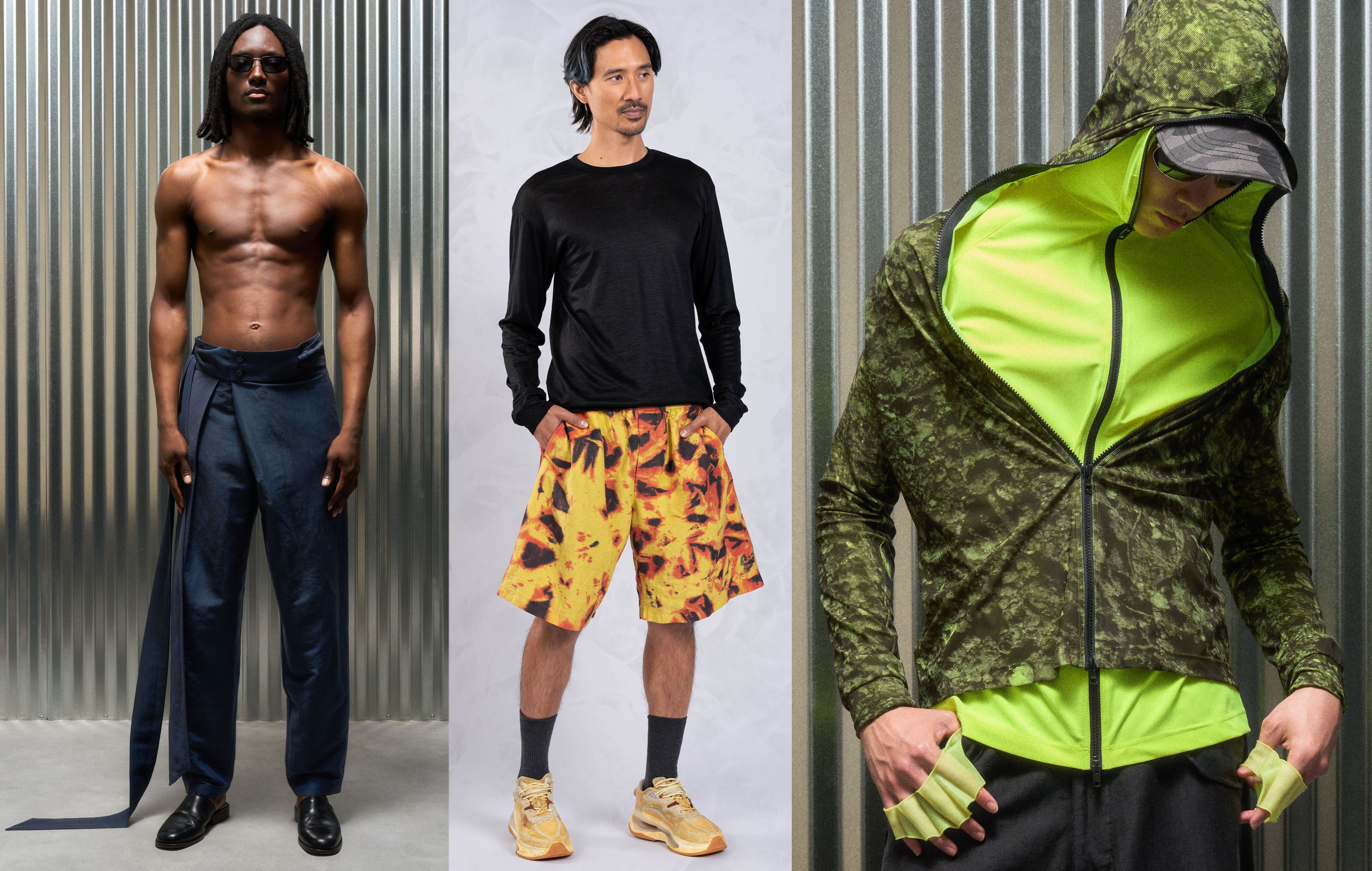
The strangest part about following Outlier’s trajectory is how it has mirrored and informed my own obsessions with materials. Even outside of synthetics, they have a love of linen and merino from a purely technical perspective. Outlier is one of the only western companies I’ve seen that regularly makes clothes out of Ramie, a Chinese bast fiber that is better at cooling than linen but that I have heard is a pain in the ass to work with. Outlier, like everyone else including Patagonia, had to deal with the thorny issue of replacing PFAS for use in durable water repellents (also known as DWR), and following their trajectory as they figured out how to solve that has been interesting as an enthusiast. Additionally, Outlier has historically had a fondness for PolarTec Alpha, an lightweight synthetic insulation that has the benefit of being highly breathable. PolarTec Alpha was used by Patagonia in its Level 3A PCU (Protective Combat Unit) jacket back when the company had more extensive collaborations with the US military. I bought that Patagonia jacket on clearance in part because Outlier was so obsessed with how well Alpha worked and has produced many garments with it. The Level 3A has since become a mild collector’s item for guys who are obsessed with military gear, and I hate to say it is the closest thing I own to a perfect jacket.
More than anything though, I am still shocked at how well their garments hold up. It’s not a flawless track record: I have a few garments with holes in some of the pockets, particularly from the time period when they moved to breathable mesh pockets which have some forgivable tradeoffs. The injected linen pants are as close as you can get to a perfect summer pant and have saved my ass in the 94 degree NYC heat, but they are slightly more frail than Outlier’s regular output by virtue of the material used. But those little exceptions to a rule exist side by side with a backlog of unkillable pants in my wardrobe, from the very baggy yet durable Bombardeauxs to the reliable SDs (Slim Dungarees), the closest thing Outlier has to a standard.
The other day during one of Aftermath’s editorial meetings, I told the rest of the site what I had been working on: a blog about a pair of pants. Prior to the meeting I had been doing some ambient farming of Citibike points for a few hours, cycling in a path that took me from Penn Station, past the cursed NYT building, through Times Square, down past Japan Society, and eventually taking the meeting on a bench in front of Stuyvusent Town. The day had gone from a dreary light rain to the oppressive summer armpit of a July in New York City. I was dehydrated and exhausted. As I told the Aftermath crew about “The Pants Blog,” I looked down and I saw that by pure coincidence I had done the entire ride in the green pants; the ones I love, that I had bought when Barack Obama was the president, and I smiled in the knowledge that I am still many years away from killing them.


